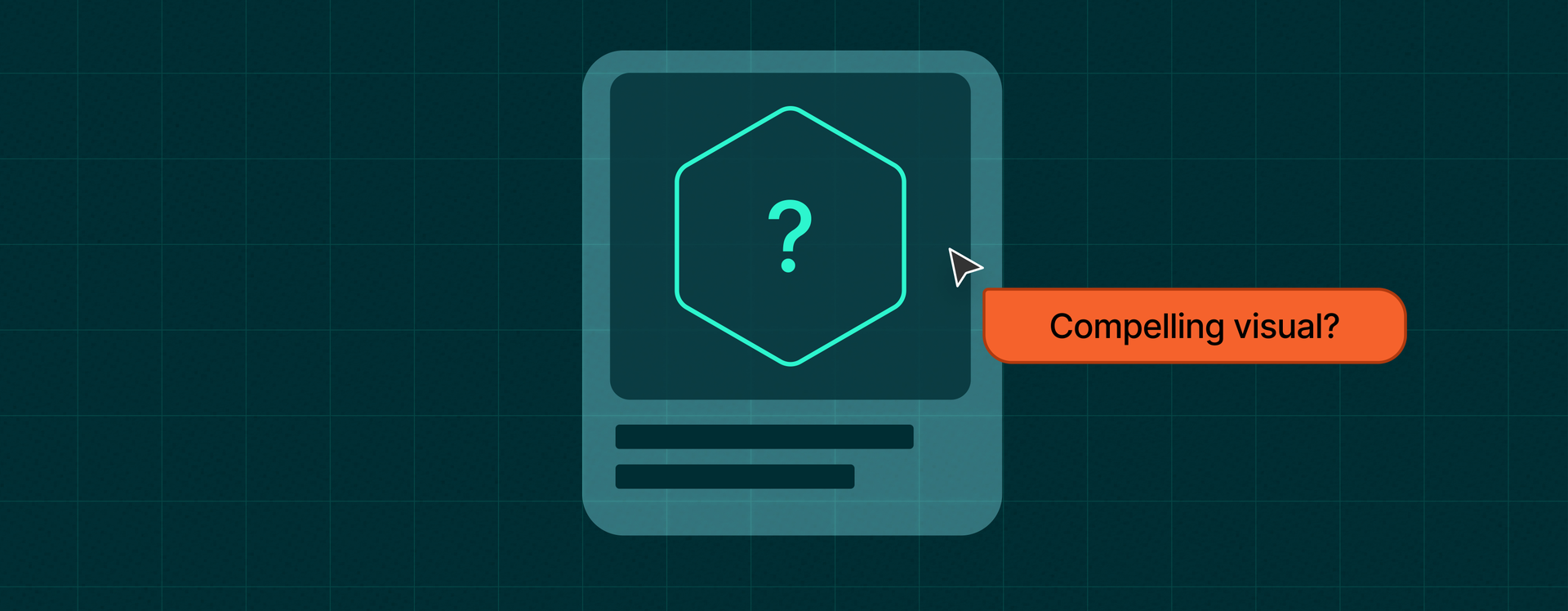Engagement is marketing gold.
Unlocking high engagement, however, can be tricky—especially for fintech companies. Soaring competition and similar product offerings both pose significant challenges.
If that weren’t enough, the human attention span is shorter than ever before. But short attention spans don’t have to be the death knell of engagement. In fact, they can be easily leveraged thanks to advancements in technology and the evolution of content consumption preferences.
In a digital landscape that’s continually evolving, the preferences and habits of audiences are shifting radically, especially among the younger generations who are migrating from desktops to mobile devices at an increasingly brisk pace.
This transition calls for a reevaluation of content strategies in the fintech space.
While long-form content retains its value for deep dives and comprehensive insights, it’s the nimble, easily digestible micro-content that is emerging as a powerhouse in fostering engagement. It’s not just about adapting to changing trends; it’s about seizing the opportunity to connect with audiences in moments of fleeting attention, delivering value with precision.
In the expanding world of fintech, micro-content is not just an option; it’s a potent tool ready to catapult your brand’s engagement to new heights.
What Is Micro-Content?
Micro-content can be defined as small, bite-sized content that is extremely brief and concise, delivering a clear, singular message. Micro-content is designed to be easily consumed and shared, capturing the audience’s attention quickly so as to fit perfectly within the fast-paced mobile-first world we live in.
Micro-content can, and should be, a part of your fintech content marketing strategy in 2023, especially on social media.
Benefits of Micro-Content
Life moves fast. If you don’t offer your target audience with opportunities for quick content consumption, you’ll lose out to the competition. Let’s take a look at some of the many benefits that micro-content has to offer.
1. Concise, Yet Engaging
Fintech and financial services are complicated.
As such, the ability to convey complex ideas succinctly without losing the essence of the topic is a monumental advantage, and this is where micro-content shines brilliantly.
It embodies a concise yet engaging format, providing readers with bite-sized, actionable insights that can be absorbed in mere moments. This brevity does not compromise the depth or quality of the information; rather, it crafts a direct and focused narrative that resonates powerfully with audiences. It challenges creators to distill their messages to the most potent and engaging elements, fostering a content environment where every word matters and every message strikes a chord.
For example, people waiting for a bus or train don’t have time to read an entire blog post on how credit monitoring works, but they will scan social media and remember a series of #fridayfintech on TikTok.
By adopting a micro-content strategy, fintech companies can create a dynamic and responsive content landscape where engagement is not sacrificed for brevity, but rather, is enhanced by it.
2. Highly Shareable
In an age where social media platforms are the epicenters of information dissemination, micro-content effortlessly fits the bill, offering nuggets of information that can be easily shared and consumed within these bustling online spaces.
Its concise format not only caters to the diminished attention spans of modern audiences but also encourages viral sharing, amplifying your reach exponentially. Users are more likely to share a succinct, impactful, and visually compelling (e.g., images, gifs, short videos, etc.) piece of content that resonates with them, thereby acting as advocates for your brand and expanding your influence organically.
Consequently, the high shareability of micro-content not only enhances your visibility but also fosters a community of engaged and enthusiastic followers, translating into a potent tool for brand growth and recognition in the fintech sector.
3. It’s Easy to Experiment and Pivot
In modern marketing, the ability to adapt and innovate is crucial, and micro-content serves as the perfect canvas for such experimentation.
Its shorter format and concise nature mean that brands can readily test different approaches to see what resonates most with their audience, without committing to extensive campaigns.
For instance, a fintech company looking to enhance user engagement might decide to trial a series of micro-content pieces across different platforms: an infographic breaking down complex financial data on LinkedIn, a quick tip video series on Instagram, or interactive polls and quizzes on X (formerly Twitter) to gauge user opinions on emerging financial trends.
These varied formats not only allow the brand to assess which type of content sparks the most engagement but also enables them to fine-tune their strategies based on real-time feedback, fostering a culture of continuous improvement and innovation.
The ease of experimentation inherent in micro-content becomes a potent tool, providing fintech companies with the agility to stay responsive and ahead in the game, constantly refining their approach to match the pulse of their audience.
Micro-Content Examples
When we talk about micro-content, it’s easy to have our minds dart straight to social media platforms, given their ubiquity and frequent mentions in this discussion.
While social media remains a potent channel for disseminating micro-content, the realm of micro-content extends far beyond, offering a rich tapestry of opportunities to connect with your fintech audience. Here are some examples of micro-content that break the confines of social media:
- Email Subject Lines: A compelling email subject line can act as a hook that entices recipients to explore the content further.
- Headlines and Captions: Crafting impactful headlines and captions can be a game-changer, offering a snapshot of the value enclosed within your content. Consider headlines that resonate with current financial trends.
- Micro Posts: Short, crisp posts that provide valuable insights or tips can be incredibly engaging. For example, a series of micro-posts demystifying common financial jargons.
- Infographics or Images: Visual content like infographics can break down complex data into easy-to-understand visuals, offering insights at a glance.
- Call-to-Action (CTA) Elements: Effective CTAs can direct your audience to engage in a desired manner, be it signing up for a webinar or downloading a whitepaper.
If you’re wondering why CTAs, headlines, and email subject lines are included on this list, it’s important to remember that micro-content doesn’t just attract users; it engages them, inviting them to delve deeper, to explore further, and to return for more insightful nuggets of information.
Every example listed above shares the characteristics of being concise, focused, and crafted to convey a specific message or prompt a particular action, aligning perfectly with the essence of micro-content.
How Fintechs Can Leverage the Power of Micro-Content
For best results, test out different micro-content strategies to see what resonates with your audience. Here are some strategies to get you started.
Tease Larger Assets
Long-form content is the workhorse of content marketing, converting prospects into leads. Use micro-content to pique the interest of your audience and drive traffic to larger assets like whitepapers, blogs, guides, ebooks, or case studies. For example, do a short video detailing what readers will find in a gated ebook.
Create Social Media-Friendly Images
Think ahead when creating blog content or guides. Size your images for each social network so they can be easily shared right from your website. If you’re creating a step-by-step user guide, include images for each step with simple, clear instructions. Use the images as a ready-made social media series that provides value to your users in just a few seconds.
Repurpose Blog Posts and Videos
Using micro-content to its full potential doesn’t mean creating new content every moment. It means exploring multiple ways to promote long-form content you already have. Repurpose one long-form video or blog post into multiple YouTube Shorts with a catchy caption. Perhaps you have a long video about how to use your platform to get a mortgage. Break the video into several smaller videos (one per step) that are only a few seconds long.
The secret to micro-content is volume and experimentation.
Fintech Best Practices for Creating Micro-Content
Creating effective micro-content for fintech requires a thoughtful approach to ensure your messaging is clear and engaging. Here are five best practices for creating micro-content in the fintech space.
1. Create Compelling Visuals
Can’t come up with the right words? Use an image! Elicit the response you want with the right graphic or image to support a punchy statement. In other words, never underestimate the power of the meme used in the right way at the right time.
2. Be Provocative
Don’t be afraid to go bold. Even if you recycle content across platforms and formats, be sure to take a new spin on it. From your titles on website pages to email subjects or preview lines, make your content concise yet “loud” enough to captivate audiences.
3. Avoid Fluff
Make every word count by being ruthless about eliminating fluff in your writing. If it doesn’t add value, get rid of it! Focus on packing as much power as possible into fewer words.
4. Tailor Content to Buyer Personas
Does your product or platform serve multiple audiences? Whether you serve small businesses or healthcare organizations, your target audience will likely consist of multiple segments. Engage these segments by structuring your micro-content to align with their needs and challenges (this includes providing a relevant entry point to a larger piece of content).
5. Leverage Statistics
Finally, utilizing industry-relevant statistics can be a game-changer in crafting micro-content that resonates. Incorporate statistics and data points that provide a snapshot of current trends or illustrate complex financial concepts in a simplified manner.
By blending qualitative narratives with quantitative data, you can create micro-content pieces that not only inform but also engage your audience, fostering a deeper connection and enhancing credibility. This approach allows you to craft content that’s not only insightful but also grounded in facts, offering a richer and more nuanced perspective to your audience.
Micro-Content vs. Short-Form Content
While micro-content and short-form content are both designed to be concise and easily digestible, there are a few key differences between the two.
Micro-Content
As we have already covered, micro-content refers to extremely concise pieces of content that convey a specific message or idea without requiring the user to invest a lot of time. This category includes elements like memes, GIFs, short videos, infographics, or even powerful CTAs and headlines. The objective is to catch the viewer’s attention instantly and convey a message or invoke a reaction in a matter of seconds.
Short-Form Content
Short-form content, while still concise compared to long-form content, offers a bit more depth and detail. For example, short articles or brief videos that can be consumed in a few minutes. Short-form content provides a middle ground, allowing for a more detailed exploration of a topic while still retaining a concise, easily-digestible format.
Drawing the Line
While both micro and short-form content aim to provide information in a concise manner, the key difference lies in the depth and detail of the content. Micro-content serves as a quick, instant engagement tool, often used to pique interest or drive specific actions, while short-form content offers a deeper dive, providing more substantial insights without demanding a significant time investment from the audience.
For fintech companies, understanding when to deploy micro-content for quick engagement and when to utilize short-form content for a more detailed narrative can help in crafting a balanced and dynamic content strategy, meeting your audience at different stages of their content consumption journey.
Up Your Micro-Content Game With CSTMR
Micro-content is the spark your fintech content marketing needs to boost engagement.
As you continue to refine your digital marketing strategy, let this article serve as your blueprint for crafting micro-content that resonates with your audience. Remember, the brilliance of micro-content lies in its concise yet powerful narrative style. It’s a playground for creativity, innovation, and experimentation, where each piece is an opportunity to connect with your audience in new, meaningful ways.
Need a hand in kick-starting your micro-content voyage? The experts at CSTMR are standing by.
Reach out to us to learn more, and together, let’s build out a micro-content strategy that forges stronger bonds with your audience and amplifies your brand’s presence in the fintech sector.




